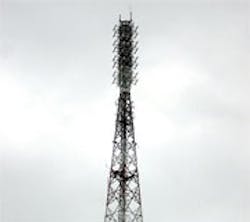Standards Back Up Wireless Sensors
Some technologies are technically viable and commercially deployed for decades before acceptance by industrial machine and robot OEMs. The roadblock often is lack of standards, and such has been the case for wireless in general and wireless sensors in particular.
A second factor limiting wireless sensor deployment has been power requirements. The main reason to go wireless is to save the time and expense of running wires, both signal and power. Early wireless sensors transmitted signals wirelessly, but still required power.
But the latest incarnations of wireless sensors have their own power source, often in the form of a battery. In many cases, the battery can be charged using power scavenged from the environment in the form of heat, light and/or vibration. A technology just entering the commercial arena will allow power to be delivered through the ether to the sensor itself.
The resulting wireless sensors fulfill OEM requirements: reliability, no need for signal or power wiring, and adherence to an industry-wide standard. "Wireless has been used in other areas of industry for more than 20 years, but is only now gaining mass acceptance due to standards activities, which ease nervousness about being tied to one vendor," says Garrett Schmidt, wireless product manager at Phoenix Contact (www.phoenixcontact.com).
"WirelessHART was released in 2007, and since that time, about five companies have released products to the market," Schmidt says. "Today, only one company actively sells WirelessHART instruments, but we expect that to change in 2011, and a few other companies are selling gateways and adapters. The ISA100 wireless standard is also in the works, and there will be some more niche standards emerging in the next few years."
Emerson Process Management (www.emersonprocess.com) is the company selling WirelessHART instruments and, like other vendors, it offers two basic methods of connecting wireless sensors to the automation system. In the first, the sensor on the instrument itself contains a wireless transmitter. In the second, a wireless adapter is added to an existing sensor or instrument to accept an analog input and retransmit a wireless signal proportional to the input. In either case, the wireless signal is transmitted to a base station, and the base station is then connected to the automation system controller or HMI via an industry-standard, wired data link.
A good example of a wireless sensor application is related by Yokogawa Electric (www.yokogawa.com). Its life sciences client has thousands of identical refrigeration units on a large campus, and they monitor two or three analog values plus one discrete value on each unit via a SCADA system. The existing system hardwired these inputs to the SCADA system, but the refrigeration units were frequently relocated, necessitating rewiring of inputs and manual reassignment of SCADA database tags.
In the new wireless system, a 900 MHz I/O radio is mounted at each refrigeration unit, and the analog and digital sensors are wired to the radio. Using the wireless network, data is transmitted to centrally located wireless gateways and data concentrators, and from there to the existing SCADA system via a wired Modbus TCP data link.
Refrigeration units now can be moved anywhere on campus making changes to the wireless network or the SCADA database. The 900 MHz mesh network is self-organizing and self-healing, making network management more efficient.
To see where industrial wireless is heading, a look at an advanced commercial application is instructive. "Human eye intraocular pressure (IOP) is measured using a MEMS-based strain sensor embedded into a contact lens," relates industry consultant Gene Yon.
The sensor gets its energy from an RF Link to a remote power source, which transmits 27 MHz power, and also detects sensor return transmission of IOP, Yon explains. The sensor measures 2.2x2.5 mm and is 50 µm thick, with an antenna deposited on the outer surface of the contact lens.
"Data gathering is deterministic with sub-millisecond latency," Yon says. "A related industrial application could be measurement of robot gripper pressure in a packaging machine."


